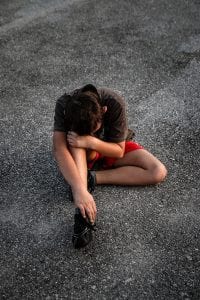 Over the past several months, Immigration and Customs Enforcement (ICE) – a branch of the U.S. Department of Homeland Security – has been separating parents and their children seeking asylum at the U.S. border. In the vast majority of cases, these children have been taken to care institutions while their parents are detained in jail.
Over the past several months, Immigration and Customs Enforcement (ICE) – a branch of the U.S. Department of Homeland Security – has been separating parents and their children seeking asylum at the U.S. border. In the vast majority of cases, these children have been taken to care institutions while their parents are detained in jail.
Although President Donald Trump signed an executive order in June to stop the separation of families, there are still more than 2,000 immigrant children, including some infants and toddlers, who remain separated from their parents.
Unfortunately, separating children from their parents is nothing new. In modern history, there are many examples of family separation, and documentation of this practice’s impact, including wars, epidemics that orphan children, and parental incarceration. As a result, there is scientific data that describes the effects of separating children from their families. So, what does the research say?
One meta-analysis published in Psychological Bulletin took a careful look at how parental incarceration affects children. The review included 40 studies and data from more than 7,000 children whose parents were incarcerated. The study found that children whose parents were imprisoned were more likely to demonstrate antisocial behavior such as bullying, hitting, and aggression towards family members and other children.
Another study published in 2012 followed more than 1,800 children who were separated from their birth parents during World War II. They were part of a group of more than 13,000 children evacuated during the war, some of whom were not separated from their families. Researchers followed these children for decades. They found that, in contrast to children who remained with their families, children who were separated had less intellectual ability, higher stress reactivity, and were less likely to move up the socio-economic ladder.
There is also clear evidence that a home – even if it is not with one’s biological parents – is a healthier environment for children compared to an institution. A study of 136 young Romanian orphans found that children placed in institutions were significantly more likely to develop psychiatric disorders compared with children placed in foster homes. Children removed from institutions and placed in foster families were less likely to have internalizing disorders than children who continued to stay in institutions.
Research shows that when children experience trauma, being with a primary caretaker can reduce the consequences of the stress. Separating families experiencing stressful situations can exacerbate the negative effects of stress. But maintaining contact with parents through letters or phone calls during absences can prevent some of the negative effects of separation.
“We know that children need safe, stable, and nurturing environments for healthy development,” said John Eckenrode, professor of human development at Cornell University. “The science is clear. A policy that removes children from parents, other than in cases of maltreatment, is inherently harmful to these children and their parents. Pursuing such a policy while knowing this to be the case raises major concerns beyond any issues of science – moral, ethical, and legal. In the current instance of the Zero Tolerance policy, I believe that we are witnessing what others have called ‘institutional child abuse’ and an immediate remedy should be sought.”
In short, the available evidence documents that separating children from their family members is a traumatic event that can have lifelong consequences. What does this tell us about the U.S. government’s policy toward families seeking asylum? Politics aside, the research clearly shows that detaining parents separately from their children is likely to have a lasting, negative effect on the children’s lives and potentially a huge cost to society.



Speak Your Mind